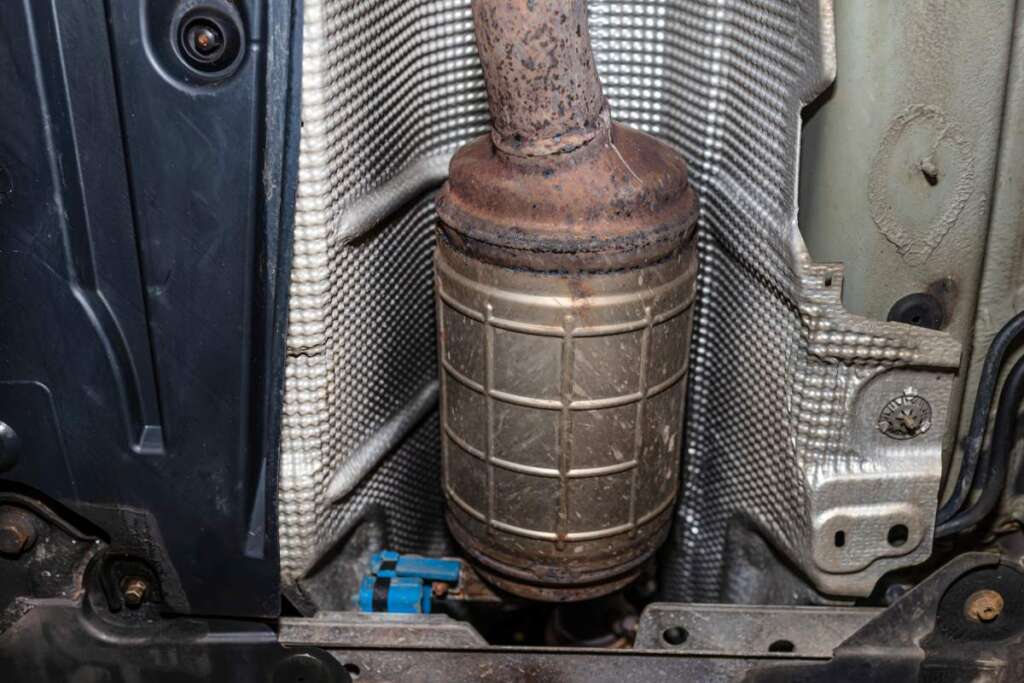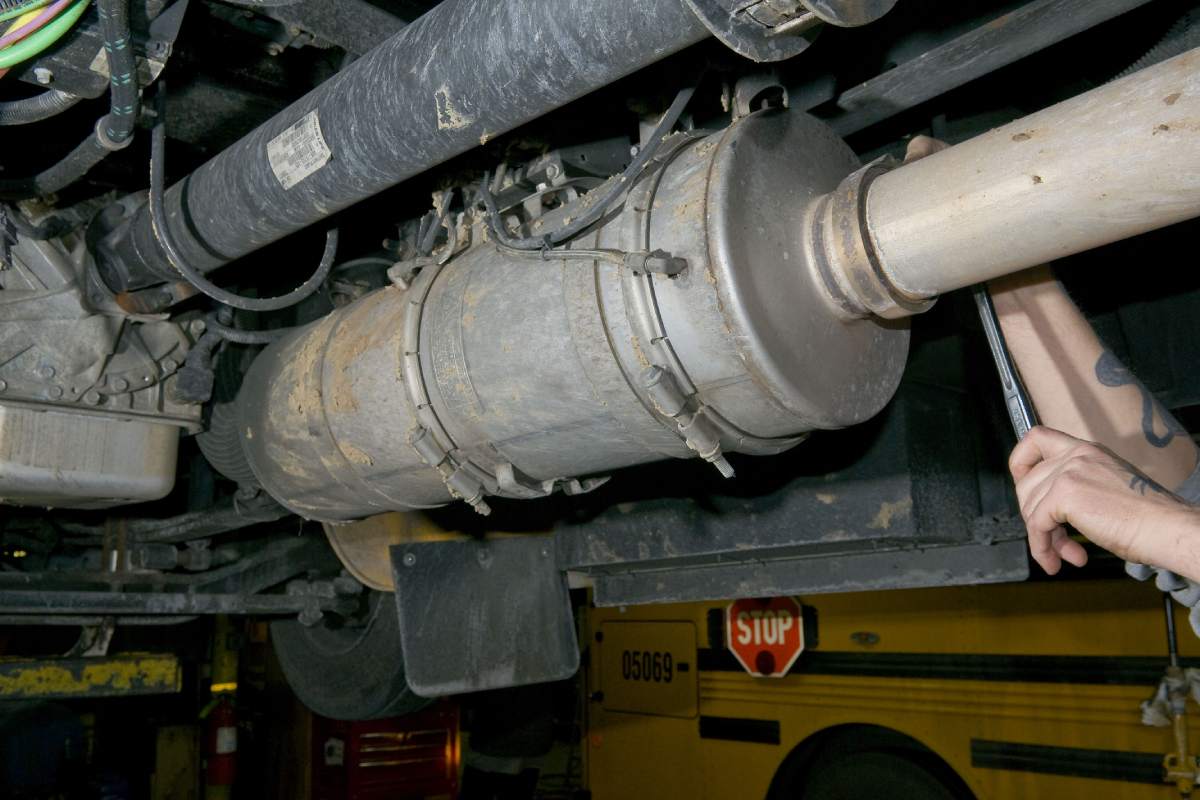The diesel particulate filter (DPF) is an essential emission control device that captures and stores exhaust particles from diesel engines, primarily those emitted as soot. DPFs have become mandatory components in diesel-powered machinery, especially in heavy industries such as mining.
The mining industry, known for its reliance on high-powered diesel engines, depends heavily on DPFs to meet environmental regulations and to protect the health of its workers and surroundings.
Here, we’ll explore what a DPF is, how it functions, why it’s so critical in mining machinery, and the maintenance considerations required to keep these filters working optimally.
What is a Diesel Particulate Filter (DPF)?
A diesel particulate filter (DPF) is a ceramic-based device designed to trap diesel particulates, primarily soot, which would otherwise be emitted through the exhaust. Diesel engines, unlike gasoline engines, produce a high level of particulates due to the nature of combustion. The DPF works by trapping these soot particles within its porous walls, capturing more than 90% of them to prevent their release into the atmosphere.
DPFs are designed with microscopic channels that trap particulate matter while allowing the exhaust gases to flow through. Over time, these channels get clogged with soot and need to be periodically cleaned through a process called regeneration, where the accumulated soot is burned off, converting it into ash. There are different types of regeneration processes for DPFs, which we’ll cover shortly, each suited to various operating conditions and equipment types.
The Importance of DPFs in Mining Machinery
Mining operations rely extensively on large diesel-powered equipment, from haul trucks to loaders and drills. The engines in these machines produce substantial emissions, including particulate matter, nitrogen oxides (NOx), and other pollutants.
In the confined environments typical of many mining operations, these pollutants can significantly impact air quality, potentially harming the health of workers and the surrounding environment.
Worker Health and Safety
Underground and open-pit mining environments are prone to particulate accumulation. Diesel exhaust particulates (DEPs) are especially harmful because they contain tiny carbon-based particles that can penetrate the respiratory system.
Prolonged exposure to DEPs has been linked to respiratory conditions, cardiovascular diseases, and even certain cancers. DPFs play a crucial role in reducing these emissions, creating a safer, healthier work environment.
Environmental Regulations and Compliance
Regulatory bodies worldwide are increasingly enforcing stringent emissions standards to reduce air pollution. In many regions, diesel-powered mining equipment must meet specific emission standards, such as the US EPA’s Tier 4 or Euro VI standards, to reduce harmful emissions.
A well-functioning DPF is essential for mining companies to comply with these regulations. Non-compliance can lead to heavy fines, operational shutdowns, and reputational damage.
Enhancing Equipment Performance and Longevity
DPFs indirectly contribute to the longevity of mining machinery. A clogged or damaged exhaust system can increase back pressure on the engine, straining its components and decreasing its efficiency. By capturing particulates and undergoing periodic regeneration, DPFs ensure that exhaust systems stay clean, which in turn supports optimal engine performance, reduces fuel consumption, and prolongs the life of the machinery.

How DPFs Work: Regeneration Types and Processes
The process of “regeneration” is critical to DPF functionality. It involves burning off the collected soot to prevent clogging and maintain efficiency. There are three main types of regeneration processes used in DPFs:
Passive Regeneration
In passive regeneration, the engine exhaust naturally heats the DPF to the temperature required to burn off the soot. This type of regeneration typically occurs during long periods of continuous operation at high loads, such as when a mining truck operates consistently in a demanding environment. Passive regeneration is effective when the machine operates at a high enough temperature and frequency, but it may not always be achievable in all mining applications.
Active Regeneration
When passive regeneration is insufficient, active regeneration is used. This process involves adding extra fuel to the exhaust stream or injecting fuel directly into the DPF to raise the temperature and burn off the soot. Active regeneration can occur during idling or lower-load periods, making it suitable for mining machinery that does not consistently reach high temperatures. However, this process requires monitoring, as it may result in increased fuel consumption.
Forced Regeneration
Forced regeneration is a manual process carried out when the DPF is severely clogged and other regeneration methods have failed. It usually involves removing the filter and using specialized equipment to burn off the soot at a maintenance facility, like those provided by specialists such as Mammoth Equip.com. While this process restores the DPF’s functionality, it can be time-consuming and costly, often requiring machinery downtime.
The Challenges of DPFs in Mining Machinery
Despite their benefits, DPFs present certain challenges for the mining industry, especially regarding maintenance and operational efficiency.
Increased Maintenance Needs
DPFs require regular monitoring and maintenance to ensure they’re functioning correctly. Accumulated ash must be removed from time to time, usually by taking the filter out and using specialized cleaning equipment. In a mining environment, where machinery is in near-constant use, scheduling regular maintenance can be challenging. Failing to do so can result in reduced engine performance, increased fuel consumption, or costly repairs.
Impact on Fuel Economy
While DPFs are essential for emissions reduction, they can sometimes lead to a slight reduction in fuel economy, especially during active or forced regeneration. Mining companies must balance the operational cost of regeneration against the benefits of meeting environmental standards and maintaining worker health.
High Operating Temperatures and Harsh Environments
Mining machinery operates in tough conditions, and DPFs must withstand high temperatures, vibration, and dust exposure. Over time, these factors can degrade the filter and reduce its effectiveness. Advanced materials and regular inspections are necessary to ensure the DPFs in mining machinery remain reliable.
Maintenance Tips for DPFs in Mining Machinery
To ensure that DPFs perform effectively in mining equipment, regular maintenance practices are essential:
Conduct Routine Inspections
Regular visual inspections help identify potential damage or clogging before it escalates. Mining companies should schedule DPF inspections at regular intervals based on manufacturer recommendations and operational conditions.
Monitor Back Pressure Levels
A well-maintained DPF should not cause excessive back pressure on the engine. Monitoring back pressure levels can indicate when a DPF needs cleaning or regeneration, preventing engine strain and fuel wastage.
Use High-Quality Diesel and Low-Ash Oils
Poor fuel quality and oils with high ash content can accelerate DPF clogging. Using high-quality diesel fuel and low-ash engine oils can help extend the time between regeneration cycles and reduce ash buildup, improving overall DPF efficiency.
Implement a Regeneration Schedule
Depending on the type of DPF and the working conditions, a set regeneration schedule can help avoid emergency forced regenerations. In some cases, remote monitoring systems can provide alerts when DPF regeneration is needed, optimizing maintenance intervals.
Conclusion
Diesel particulate filters are invaluable in mining machinery, helping to reduce harmful emissions, comply with environmental regulations, and protect worker health. Given the demanding conditions in mining environments, DPFs need to be robust and well-maintained to withstand high temperatures and harsh operational conditions.
While they add a layer of maintenance and fuel costs, the benefits of using DPFs—such as a safer work environment, compliance with regulations, and improved machinery performance—make them essential in today’s mining industry.
Regular monitoring, regeneration, and use of quality fuels are critical to optimizing DPF functionality, helping mining companies run their operations sustainably and safely.

